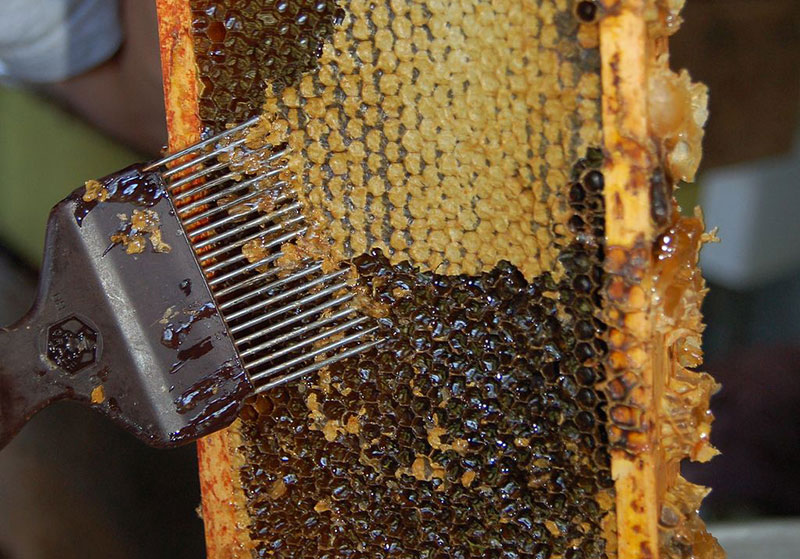
Have you ever wondered about the best way to harvest honey? Whether you are a seasoned beekeeper or just starting out, this article will provide you with valuable insights and tips on how to maximize your honey harvest. From the optimal time to harvest to the equipment you need, we will guide you through the process step by step. Prepare to become an expert in honey harvesting and enjoy the sweet fruits of your labor!
Harvesting Honey: An Overview
Welcome to the world of honey harvesting! If you are a beekeeper or someone interested in beekeeping, then you know how rewarding it is to harvest your own honey. The process of harvesting honey involves several steps that need to be followed carefully to ensure a successful harvest. In this comprehensive article, we will guide you through the entire honey harvesting process, from understanding the benefits of proper honey harvesting to choosing the right equipment, preparing the hive, extracting honeycomb, bottling and storing honey, and managing healthy hives. So, let’s dive in and discover the best way to harvest honey!
Understanding the Honey Harvesting Process
Before we delve into the specifics of honey harvesting, it’s important to understand the process itself. Honey harvesting is the act of collecting honey from beehives for consumption or sale. It involves careful planning, timing, and the use of appropriate tools and techniques to minimize stress on the bees and maximize honey yield. Harvesting honey can be a rewarding experience if done correctly, as it allows you to enjoy the fruits of your bees’ labor while also benefiting the health of your hives.
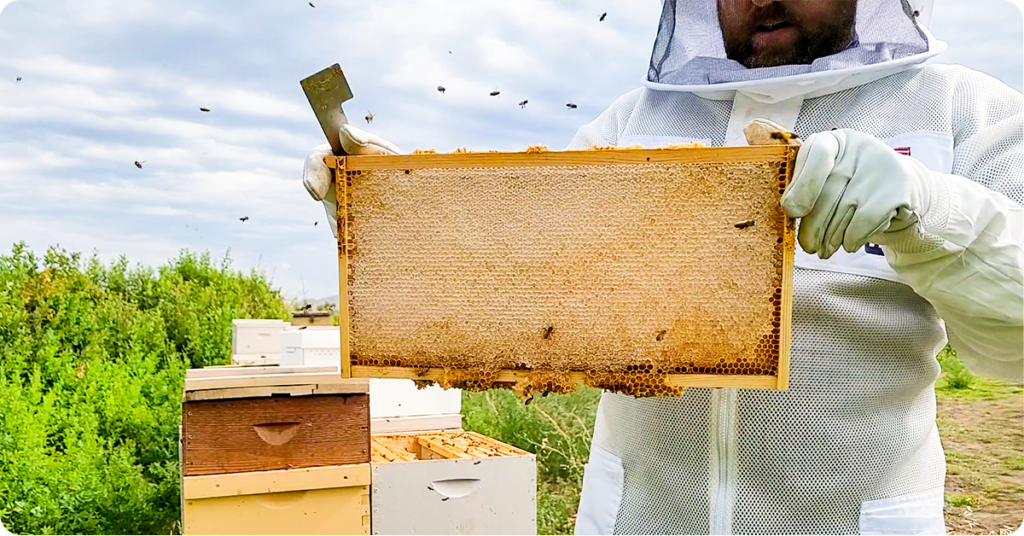
Benefits of Proper Honey Harvesting
Proper honey harvesting not only rewards you with delicious, natural honey but also provides various benefits to your bees and overall beekeeping operation. Harvesting honey helps manage hive populations, prevents overcrowding, and reduces the risk of swarming. It also stimulates honey production, allowing the bees to replenish their honey stores during the active seasons. Moreover, harvesting honey strengthens the bond between beekeeper and bees, fostering a mutually beneficial relationship and creating a sustainable apiary. So, let’s explore the factors you need to consider before embarking on your honey harvesting journey.
Factors to Consider Before Harvesting Honey
Choosing the Right Time:
Determining the right time to harvest honey is crucial for both the quality and quantity of your yield. It’s essential to wait until the honey flow season, when nectar flow is at its peak, to ensure an abundant and flavorful harvest. This often coincides with the blooming of certain flowers or the arrival of peak foraging season. Monitoring Frames for Optimal Honey Ripeness:
To ensure that the honey is ripe and ready for harvesting, it is important to monitor the frames in your honey supers. Honey frames that are fully capped with wax seals indicate that the honey is properly ripened and can be harvested. However, don’t wait too long, as overripened honey may ferment and reduce the overall quality of your yield. Considering Environmental Factors:
Environmental factors such as weather conditions, availability of nectar sources, and local regulations also play a role in determining the right time to harvest honey. It’s important to be aware of any restrictions or guidelines imposed by local beekeeping associations or authorities to ensure responsible beekeeping practices. Now that you have considered the timing and environmental aspects, let’s move on to the equipment and tools required for honey harvesting.
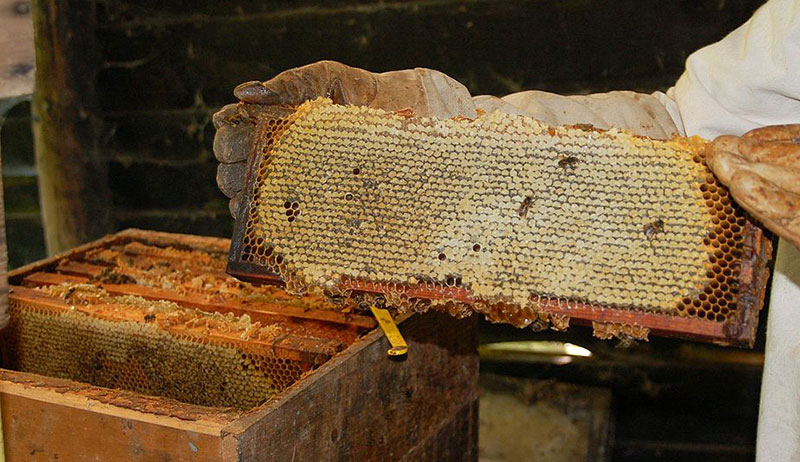
Equipment and Tools
Essential beekeeping equipment:
To harvest honey successfully, you will need a few essential beekeeping tools. These include a beehive suit or protective clothing, gloves, a veil or beekeeping hat, a smoker, a bee brush, a hive tool, and a beekeeping suit or jacket. These tools will help you stay safe and protect yourself from bee stings while working with your bees.
Hive Tools and Protective Gear:
In addition to the essential beekeeping equipment mentioned above, it’s important to have hive tools and protective gear specifically designed for honey harvesting. These may include honey supers, a queen excluder, honey frames, a queen cage, a bee escape, and a bee brush. These tools and gear will assist you in the extraction and transportation of honey supers and ensure the protection of the queen and brood.
Honey Extraction Equipment and Containers:
Once you have removed the honey supers from the hive, you will need equipment and containers for extracting, uncapping, and filtering the honey. This may include a honey extractor, uncapping knife or fork, a honey strainer or filter, settling tanks, and food-grade containers suitable for storing honey.
Sanitizing and Cleaning Equipment:
To maintain hygiene and prevent contamination of your honey, it is important to regularly sanitize and clean your honey harvesting equipment. This includes cleaning your extractor, frames, honey supers, and other tools and containers used in the process. Proper sanitization ensures that your honey remains fresh and free from impurities.
Now that you have gathered all the necessary equipment and tools, let’s move on to the preparation of the hive before honey extraction.
Preparing the Hive
Smoking the Hive:
Before you begin harvesting honey, it is important to smoke the hive. Smoking the hive helps calm the bees, making them less agitated during the honey extraction process. The smoke disrupts the bees’ communication and triggers them to gorge on honey, preparing them for a potential relocation. This process makes the bees more cooperative and minimizes the risk of bee stings during hive inspection and honey removal.
Removing Bees from Honey Supers:
To harvest honey, you need to remove the bees from the honey supers. This can be done using a bee escape board or a bee blower. A bee escape board is a one-way bee exit that allows bees to leave the supers but prevents them from re-entering. A bee blower, on the other hand, uses a gentle puff of air to blow the bees away from the honey supers without causing harm. These methods help ensure that the honey supers are bee-free and ready for extraction.
Queen Excluder Usage:
A queen excluder is a device used to confine the queen bee to the brood chamber, preventing her from accessing the honey supers. The queen excluder has small openings that allow worker bees to pass through while keeping the queen and larger drones restricted to the lower sections of the hive. Using a queen excluder during honey harvesting prevents the queen from laying eggs in the supers and ensures that the extracted honey remains free from brood.
Now that the hive is prepared, it’s time to move on to the actual process of extracting honeycomb.
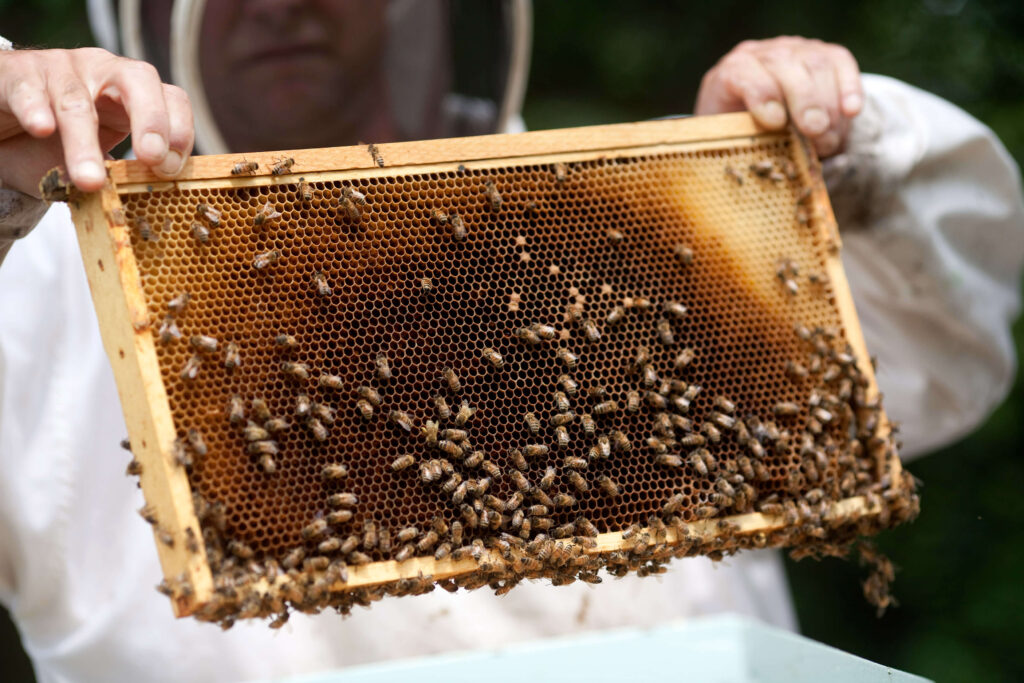
Extracting Honey Comb
Removal and Transporting of Honey Supers:
Once the honey supers are bee-free, it’s time to remove them from the hive. Carefully lift each honey super, ensuring you do not damage the frames or disturb the remaining bees in the brood chambers. Place the removed supers in a clean, covered container or a dedicated honey extraction area to prevent contamination and deter pests.
Uncapping the Honey Comb:
Before extracting honey, you need to uncap the cells in the honeycomb frames. This can be done using an uncapping knife or an uncapping fork. Gently run the uncapping knife or fork over the surface of the honeycomb, removing the wax cappings to expose the honey-filled cells. This step allows the honey to be readily extracted during the next stage of the process.
Extracting Honey Using a Honey Extractor:
A honey extractor is a mechanical device used to extract honey from the uncapped frames. There are different types of honey extractors, including manual crank extractors and electric extractors. Simply load the uncapped frames into the honey extractor, and as you spin the extractor, centrifugal force pulls the honey out of the cells and collects it at the bottom of the extractor. This process ensures minimal damage to the honeycomb and allows the honey to be cleanly extracted.
Filtering Honey:
Once the honey extraction is complete, it is important to filter the honey to remove any remaining impurities or wax particles. You can use a stainless-steel honey strainer or a fine-mesh sieve to achieve this. Pour the extracted honey through the strainer or sieve into a clean settling tank or container. This will remove any debris, ensuring that your honey is pure and free from unwanted particles.
With the extraction and filtering completed, it’s time to move on to the final steps of bottling and storing honey.
Bottling and Storing Honey
Choosing Appropriate Bottles or Jars:
When it comes to bottling honey, it’s important to choose appropriate containers that are food-grade and suitable for long-term storage. Glass jars or plastic containers specifically designed for honey storage are ideal choices. Ensure that the containers have tight-fitting lids to maintain the quality of your honey and prevent moisture or air from entering.
Properly Labeling Honey:
To keep track of your honey and provide essential information to consumers, it is important to properly label your honey. Labels should include the type of honey, the date of harvest, your beekeeping operation’s name or logo, and any other relevant details. In some regions, labeling requirements may vary, so it’s always a good idea to check with local authorities or beekeeping associations.
Storing Honey for Longevity:
To ensure the longevity and quality of your honey, it’s important to store it in the correct conditions. Honey should be stored in a cool, dry place away from direct sunlight. Sunlight and heat can cause the honey to darken and degrade in quality. Proper storage will help preserve the flavor, freshness, and nutritional benefits of your honey for an extended period.
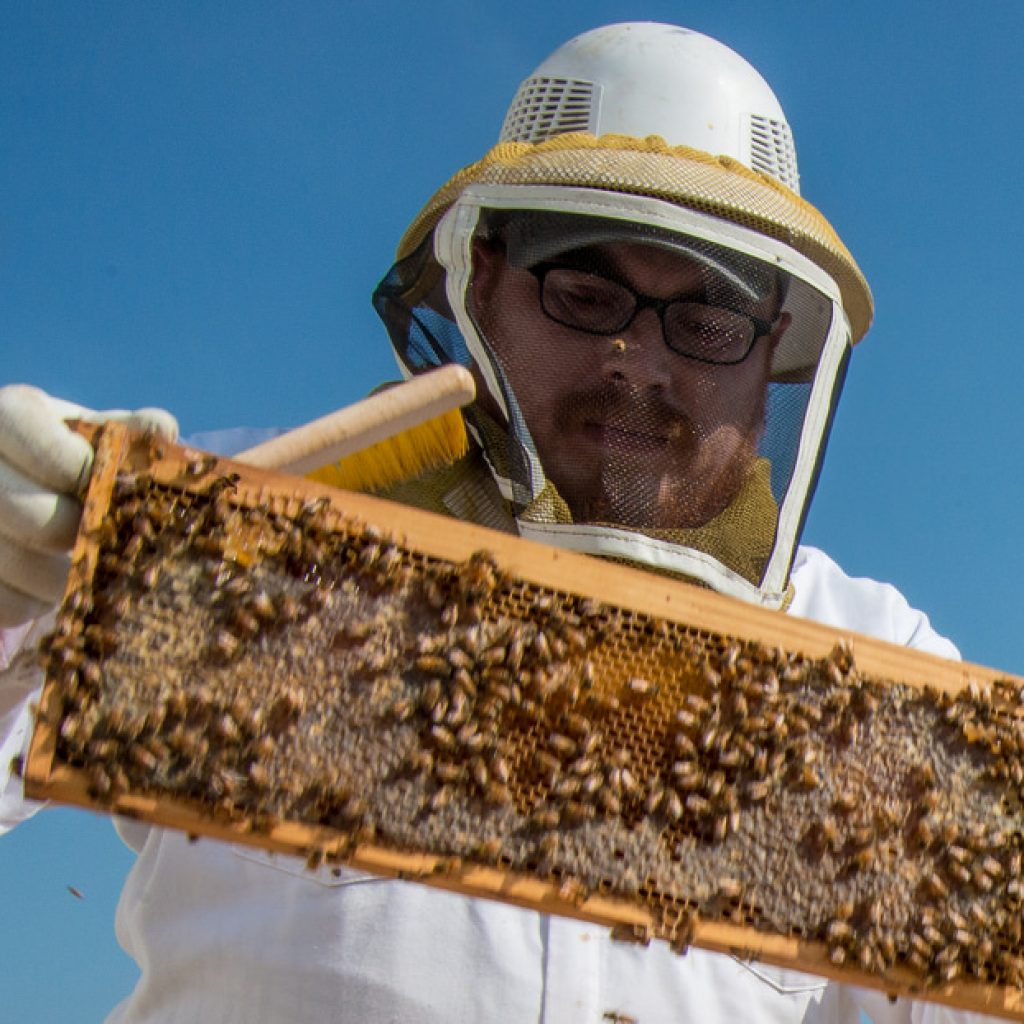
Harvesting without Damaging Bees
Reducing Bee Stress:
During the honey harvesting process, it is important to minimize stress and harm to the bees. Be mindful of their natural behavior and handle them with care. Avoid rough movements, loud noises, and excessive smoke that may disturb or harm the bees. By reducing stress, you ensure the sustainability of your beekeeping operation and promote healthy hive activity.
Using Gentle Techniques:
Using gentle and non-invasive techniques while harvesting honey helps maintain the overall well-being of your bees. Avoid crushing or damaging the honeycomb frames as you remove them from the hive. Handle the honey supers with care to prevent disruption of the brood chambers and minimize any negative impact on the colony.
Protecting the Queen and Brood:
Protecting the queen and brood is crucial during honey harvesting to ensure the overall health and productivity of your hive. The queen excluder and careful inspection of frames will help prevent the queen from being accidentally harmed or removed during the process. Be vigilant and take precautions to avoid disturbance or damage to the brood chambers, as the brood is essential for the continued growth of your colony.
Managing and Maintaining Healthy Hives
Limiting Harvest Quantity:
When harvesting honey, it’s important to consider the needs of your bees and manage your hive responsibly. Avoid overharvesting by only taking surplus honey, leaving enough stores for the bees to survive winter or periods of low nectar flow. By limiting the quantity you harvest, you ensure the well-being and survival of your bees throughout the year.
Providing Supplementary Feeding:
To support your bees during times of scarcity or when recovering from honey harvesting, consider providing them with supplementary feeding. This can involve offering sugar syrup or pollen substitutes to supplement their natural nectar and pollen sources. Supplementary feeding ensures that your bees have enough resources for their survival and helps maintain their overall health and productivity.
Inspecting and Ensuring Hive Health:
Regular hive inspections are essential for identifying and addressing potential issues that may impact your bees’ health and honey production. Inspect the hive periodically to check for signs of disease, pest infestations, or other abnormalities. Take necessary steps, such as treating for mites or parasites, to maintain hive health and ensure a productive colony.
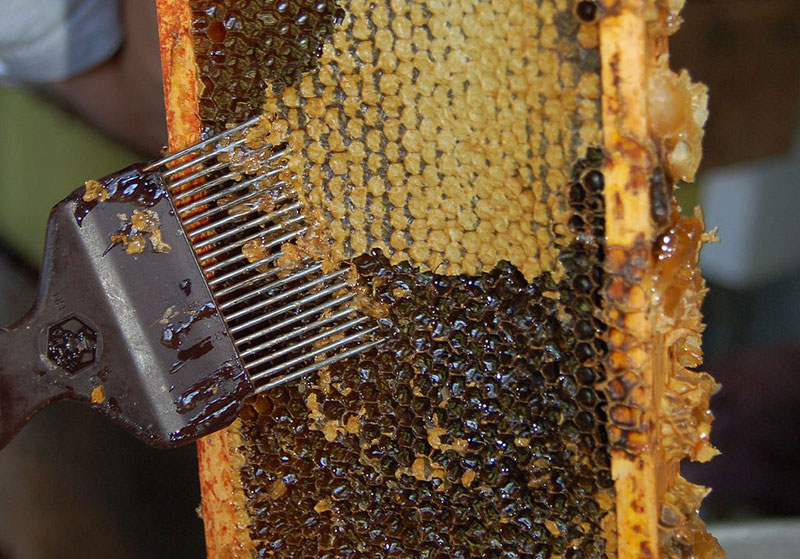
Tips and Tricks for Successful Honey Harvesting
Removing Moisture from Honey Comb:
To prevent excess moisture in your honey, it’s important to extract honeycomb at the right time. Honey with high moisture content may ferment and affect the quality and taste of your honey. Use a refractometer or other moisture-testing tools to ensure that the moisture content of your honey is within the acceptable range before extraction.
Preventing Honey Granulation:
To prevent your honey from granulating and becoming solid, store it in proper conditions and avoid exposing it to low temperatures. Granulation is a natural process, but by storing your honey at room temperature and gently stirring occasionally, you can help delay the granulation process and maintain a smooth, liquid consistency.
Adding Additional Flavors to Honey:
If you want to experiment with different flavors, you can infuse your honey with various ingredients such as herbs, spices, fruits, or even edible flowers. This process involves heating the honey gently and adding the desired flavoring components. Infused honey can add a unique and delightful twist to your harvested honey.
Harvesting Royal Jelly:
In addition to honey, beekeepers can also harvest royal jelly from their hives. Royal jelly is a nutrient-rich substance produced by young worker bees and fed to the queen and developing larvae. Harvesting royal jelly involves carefully extracting the substance without harming the bees or damaging the brood chamber. This specialized process requires specific knowledge and techniques, so it is advisable to consult with experienced beekeepers or professionals before attempting royal jelly harvesting.
Common Mistakes to Avoid
Failing to Properly Harvest Honey Supers:
One common mistake beekeepers make during honey harvesting is failing to properly harvest honey supers. Leaving honey supers too long or forgetting to uncap frames can lead to mold, fermentation, or pest infestation. It is important to follow the proper procedures to avoid damage to your honey and hive.
Neglecting Hive Maintenance:
Neglecting hive maintenance and regular inspections can have detrimental effects on your bees and honey production. Beekeepers should ensure their hives are in good condition, free from pests, and have enough space for the colony to thrive. By neglecting hive maintenance, you risk disease outbreaks, poor honey quality, and weakened colonies.
Introducing Contaminants to Honey:
Contamination of honey can occur if the honey harvesting equipment or containers are not properly sanitized, or if the honey is exposed to unsanitary conditions. Always clean and sanitize your equipment before and after each use to prevent any contaminants from affecting the quality and purity of your honey.
In conclusion, honey harvesting is a meticulous process that requires careful planning, appropriate equipment, and consideration for the well-being of your bees. By following the steps outlined in this comprehensive article, you can ensure a successful honey harvest while maintaining healthy hives and preserving the delicious, natural goodness of your honey. Remember to always prioritize the health and safety of your bees, and enjoy the sweet rewards of your hard work as you savor the fruits of your labor. Happy honey harvesting!